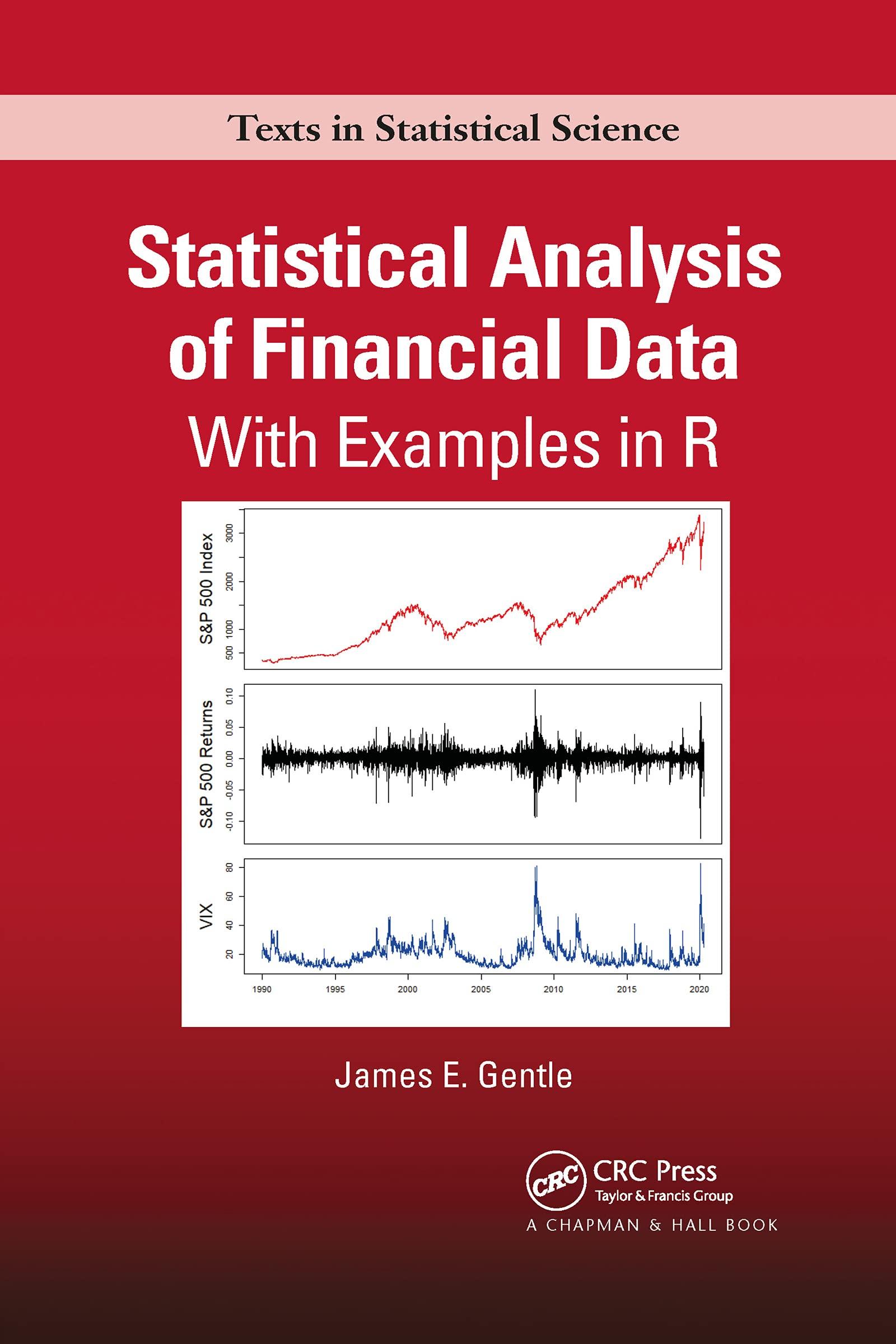Suppose the price of stock XYZ is ($ 100). Suppose that the daily (log) returns follow a
Question:
Suppose the price of stock XYZ is \(\$ 100\). Suppose that the daily \(\log\) returns follow a location-scale t distribution with mean 0 , scale 0.002, and degrees of freedom 6 . Assume that the daily log returns are sequentially independent. (A large assumption!)
(a) Generate a random sequence of 253 daily log returns of XYZ. (This is approximately a year of trading days.)
Plot a histogram of the returns.
What is the standard deviation of the distribution of the daily log returns?
What is the observed standard deviation of your sample?
What is the statistical volatility of XYZ?
(b) Suppose the beginning price of stock XYZ is \(\$ 100\).
Using the random log returns generated in Exercise 3.19a, form a random sequence of 253 daily prices of XYZ, and plot them as a time series. (This is a diffusion process over approximately one year of trading days.)
(c) Now randomly permute the random log returns generated in Exercise 3.19a (use the R function sample), and again form a random sequence of 253 daily prices of XYZ starting at \(\$ 100\). Add a plot of these prices to the plot produced in Exercise 3.19b, using a different color or line type.
Now, again randomly permute the log returns generated in Exercise 3.19a, and plot the sequence of prices on the same plot with a different color or line type.
Do this two more times (for a total of 5 plots) on the same set of axes.
What is remarkable about the plots?
Step by Step Answer:





